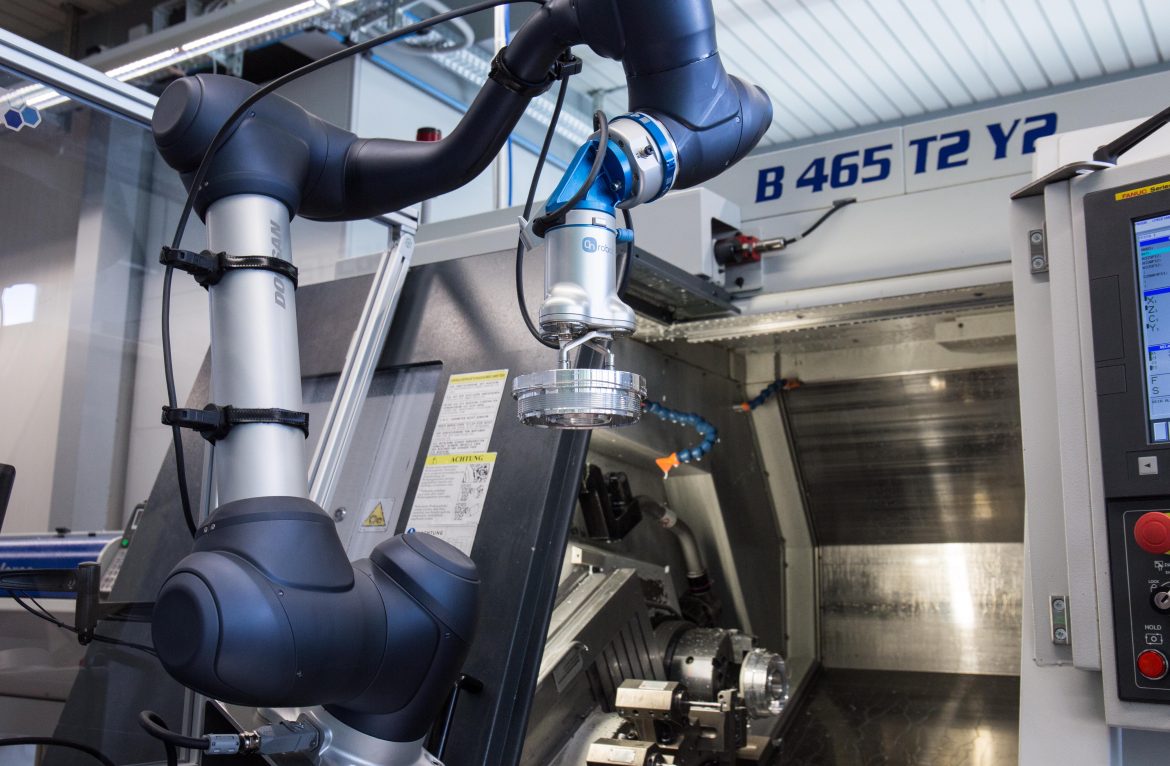The global robot end effector market size is expected to reach $4.2 billion by 2028, rising at a market growth of 12.6% CAGR during the forecast period, according to a report by ResearchAndMarkets.com.
Robot end effectors are mechanical devices attached to the end of robotic arms that respond to the robot’s environment. It includes selecting and positioning objects, putting product components together, and stacking boxes and packages. The process tools, grippers, and sensors work with the robot end effectors fixed to the robot arm. Robot end effectors are sometimes called end-of-arm tooling (EOA), robot tools, end-of-arm devices, robotic peripherals, robotic tooltips, and robot tools.
An end effector enables the robot to engage with the task at hand. The majority of end effectors are electromechanical or mechanical. They can be as basic as two-finger grippers for pick-and-place activities or as sophisticated as extensive sensor networks for robotic inspection. Sometimes the phrase ‘End of Arm Tool'(EOAT) is also used to denote robotic end effector. A robot end effector is essentially the business end of the robot. Most robots are virtually useless without an end effector.
For example, an adjustable robotic arm can be set to a specific spot in its workplace, but without an end effector, it cannot carry out any operations. The use of collaborative robotics is the main driver propelling the robot end effector market. These robots engage with their surroundings and respond appropriately. They adjust their course of action or operation direction in response to alterations in the working environment. Also, the advent of automation in various sectors to complete tasks more quickly has increased the demand for robot end effectors.
Automation, AI & ML, IIoT, and other emerging technologies have greatly broadened the use cases for robots, which has resulted in a considerable increase in demand for robotics in recent years.
The robotics business has also been impacted by technological development, which has made it possible to create creative, affordable robots. Investment in robotics is further fueled by the growing adoption of digital technologies in commercial, residential, and industrial end-user sectors.
Also, advantageous market conditions are being created for the development of the robotics and end-effector markets by supportive government policies and programs like ‘Industry 4.0’as well as Smart Cities. Hence, throughout the projection period, the demand for robot end effectors is expected to rise, which will promote market growth.
Robot end effectors effectively boost labor productivity while improving machine productivity. Automating a manufacturing process speeds up output and increases worker productivity.
As a result, more is produced per hour of work. An increase in worker productivity has a substantial positive impact on the business because labor costs have been steadily growing in industrialized nations worldwide recently. In addition, most of the monotonous jobs that humans formerly performed are now being replaced by machines, demanding the use of robots. Robotic technology also aids in reducing the effects of a labor shortage concurrently.
Investing in industrial robotics and automation is still prohibitively expensive. The expense of installing robotic end effectors is a commercial restraint. The businesses spend less on new investments. They have less capital than the automotive and other major sectors.
Few SMEs nowadays, like glass polishing businesses, are required to automate their operation. Additionally, robot end effectors are extremely vulnerable to damage when used in heavy sectors, where repair or maintenance can be expensive. All these factors significantly hinder the growth of the market.

